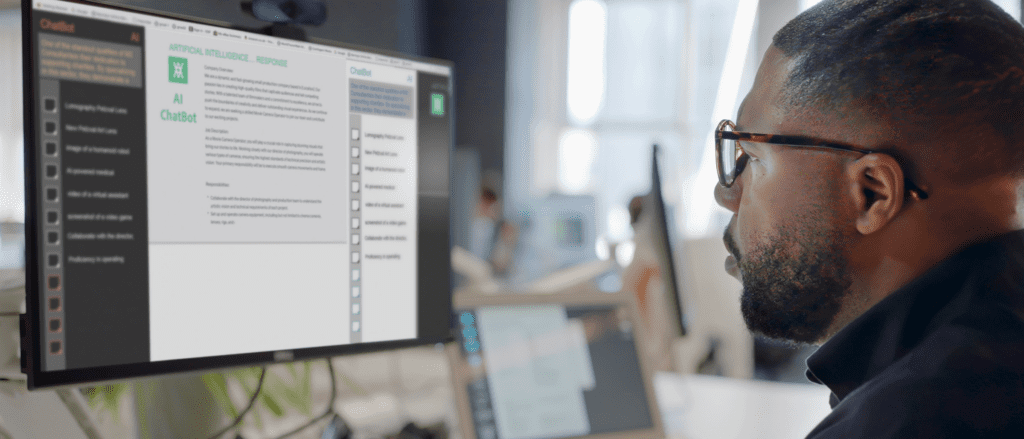Driving Value with AI: How Learning Teams Can Achieve More with Less
Open any tech publication or business journal, and you’ll be bombarded with AI’s promises: increased efficiency, reduced errors, better decision-making, cost savings — the list goes on and on.
The most obvious advantage for L&D? Time. AI helps instructional designers move faster through the design and development process, meaning learning solutions can be delivered in less time without sacrificing quality. But for organizations to really reap the benefits, it’s essential that L&D teams have strong skills in instructional design as well as how AI can augment those skills.
Design: Faster Ideation and Prototyping
One of the biggest time sinks in instructional design is sorting through large amounts of content and figuring out how to structure it for learners. AI takes a lot of that heavy lifting off the designer’s shoulders. During the design phase, AI can quickly sift through massive amounts of information, helping instructional designers organize content, identify core learning objectives, and build a clear path forward — all without multiple back-and-forth meetings with subject matter experts (SMEs).
AI is also great at rapid prototyping. Instead of spending hours creating rough drafts of your learning solution, you can use AI tools to produce quick design prototypes for feedback. SMEs can review these faster, allowing you to refine your ideas without wasting time on a full-blown design that might need significant changes later. It does add a review cycle, but it’s worth it. It’s all about agility and speed, giving designers more time to focus on creating impactful learning experiences.
Development: Speeding Up Content Creation
The development process with AI is even better. If you’ve got a massive amount of source material to work with, AI can step in to break it down into smaller, more digestible chunks. You can also use it to create draft content for the specific learning elements of the training (e.g., learning objectives, introductions, transitions) Instead of staring at a blank page, instructional designers can jump right into refining and perfecting the material.
AI isn’t just cutting down the time it takes to develop content — it’s allowing designers to focus on the high-level tasks that truly matter, like making sure the content aligns with learning goals and is engaging for the learner. It’s a huge boost in efficiency without losing sight of what’s most important: the learner’s experience.
Why Human Expertise Still Matters
Here’s the catch, though: AI is only as good as the people using it. To get the best results, you need instructional designers who not only know their stuff but are also savvy with AI. It’s a powerful tool, but it’s by no means a substitute for human creativity and expertise. The designer’s job is to make sure the AI-generated content meets high standards and keeps the learner at the center of everything.
The bottom line? The value of AI application in the L&D process is incredible in time reduction and prototyping but must leverage the instructional designer to keep the focus on quality of learning and the learner.
AI + Human Expertise = Maximum Value
At the end of the day, AI has the potential to deliver significant value in L&D by speeding up both the design and development processes. It’s a shortcut machine, helping instructional designers get to the finish line faster. But to unlock that value, you need a team that knows how to work with AI effectively, combining their instructional design expertise with the latest tech tools.
Reach out to us at JLS@judge.com to chat more!
About Mark Burke
Mark Burke joined The Judge Group in 2019 and is the Senior Director of Learning Strategy for Judge Learning Solutions where he consults with clients to help them assess their situation, create a strategy, and design and develop a best-in-class custom learning solution. Mark’s experience includes the creation and management of five different online universities, the development of competency profiles and related curricula for many Fortune 100 companies, owning his own assessment and consulting company, and 20 years of developing and implementing learning strategies in both corporate and higher education environments.




